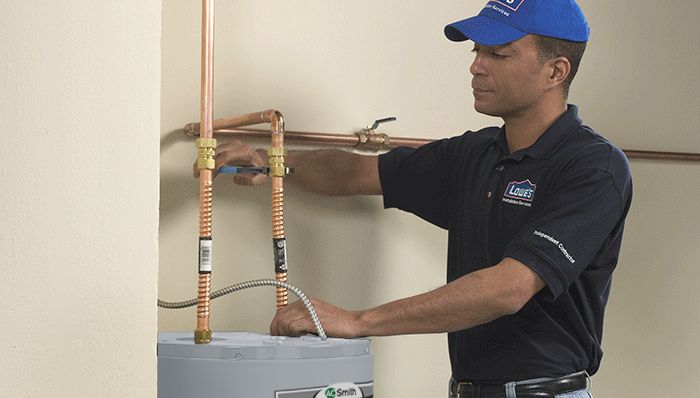Maintaining Your Home's Hot Water System: Essential GuidelinesStraightforward Methods to Care for Your Home's Hot Water System Properly
Maintaining Your Home's Hot Water System: Essential GuidelinesStraightforward Methods to Care for Your Home's Hot Water System Properly
Blog Article
Listed here below you will find additional excellent resources in regards to How to Maintain Your Water Heater & Prolong its Life.

Hot water is crucial for daily convenience, whether it's for a rejuvenating shower or washing recipes. To ensure your warm water system runs successfully and lasts longer, normal maintenance is vital. This short article provides functional suggestions and understandings on exactly how to preserve your home's hot water system to prevent disturbances and pricey repair work.
Intro
Keeping your home's hot water system might seem overwhelming, but with a few simple steps, you can ensure it runs efficiently for several years to come. This guide covers whatever from understanding your hot water system to DIY maintenance pointers and understanding when to hire expert assistance.
Value of Keeping Your Warm Water System
Normal upkeep not just extends the lifespan of your hot water system but also guarantees it runs successfully. Ignoring upkeep can cause reduced effectiveness, higher power costs, and also early failing of the system.
Indications Your Hot Water System Requirements Maintenance
Understanding when your hot water system needs focus can avoid major concerns. Keep an eye out for indications such as inconsistent water temperature, weird sounds from the heating system, or corroded water.
Purging the Hot Water Heater
Flushing your water heater removes sediment build-up, boosting effectiveness and extending its life.
Monitoring and Replacing Anode Rods
Anode poles protect against deterioration inside the storage tank. Examining and replacing them when broken is critical.
Facility Issues Requiring Specialist Aid
Instances consist of major leaks, electrical problems, or if your water heater is consistently underperforming.
Routine Professional Upkeep Advantages
Professional upkeep can consist of extensive inspections, tune-ups, and ensuring conformity with safety criteria.
Checking and Changing Temperature Setups
Adjusting the temperature settings makes certain ideal efficiency and security.
DIY Tips for Upkeep
You can carry out several upkeep tasks on your own to keep your warm water system in top problem.
Checking for Leakages
Consistently check pipes and links for leaks, as these can cause water damage and greater bills.
Recognizing Your Hot Water System
Prior to diving into maintenance tasks, it's handy to comprehend the basic elements of your hot water system. Normally, this includes the water heater itself, pipes, anode poles, and temperature controls.
Regular Monthly Maintenance Tasks
Routine monthly checks can help capture minor problems prior to they intensify.
Examining Pressure Relief Valves
Examining the pressure relief valve guarantees it works appropriately and prevents extreme stress buildup.
Protecting Pipelines
Insulating warm water pipelines decreases heat loss and can conserve energy.
When to Call an Expert
While DIY upkeep is advantageous, some issues need specialist knowledge.
Conclusion
Routine upkeep of your home's hot water system is necessary for efficiency, durability, and expense financial savings. By following these ideas and knowing when to seek specialist help, you can ensure a trustworthy supply of warm water without unanticipated disturbances.
How to Maintain an Instant Hot Water Heater
Before tinkering with your hot water heater, make sure that it’s not powered on. You also have to turn off the main circuit breaker and shut off the main gas line to prevent accidents. Also turn off the water valves connected to your unit to prevent water from flowing into and out of the appliance. 2. When you’re done, you have to detach the purge valves’ caps. These look like the letter “T” and are situated on either side of the water valves. Doing so will release any pressure that has accumulated inside the valves while at the same time avoid hot water from shooting out and burning your skin. 3. When the purge valves’ caps are removed, you have to connect your hosing lines to the valves. Your unit should have come with three hoses but if it didn’t, you can purchase these things from any hardware or home repair shops. You can also get them from retail stores that sell water heating systems. Read the user’s manual and follow it to complete this task properly. When the hosing lines are connected, open the purge port’s valves. 4. You should never use harsh chemical cleaners or solutions when cleaning your unit. Make use of white vinegar instead. It should be undiluted and you’ll probably use about 2 gallons. 5. Now flush your water heater. This task should probably take about 40 minutes. We can’t give you specific directions for this because the procedure is carried out depending on the type, model and brand of your heater. With that being said, refer to the user’s manual. 6. When you’re done draining the unit, you have to turn off the purge port valves again. Remove the hosing lines that you earlier installed on each of the water valves. Put the valve caps (purge port) back in their respective places and be very careful so as not to damage the rubber discs that are found inside these caps. 7. Now that everything’s back in place, check your user’s manual again to find out how to reactivate your water heating system. 8. Once it is working, turn one of your hot water faucets on just to let air pass through the heater’s water supply pipes. Leave the tap on until water flows smoothly out of it. https://www.orrplumbing.com/blog/2014/september/how-to-maintain-an-instant-hot-water-heater/

We had been introduced to that report on Tips on Maintaining a Water Heater from someone on our other web blog. Remember to take the opportunity to promote this content if you enjoyed reading it. Thanks a lot for being here. Come back soon.
Click Here Report this page